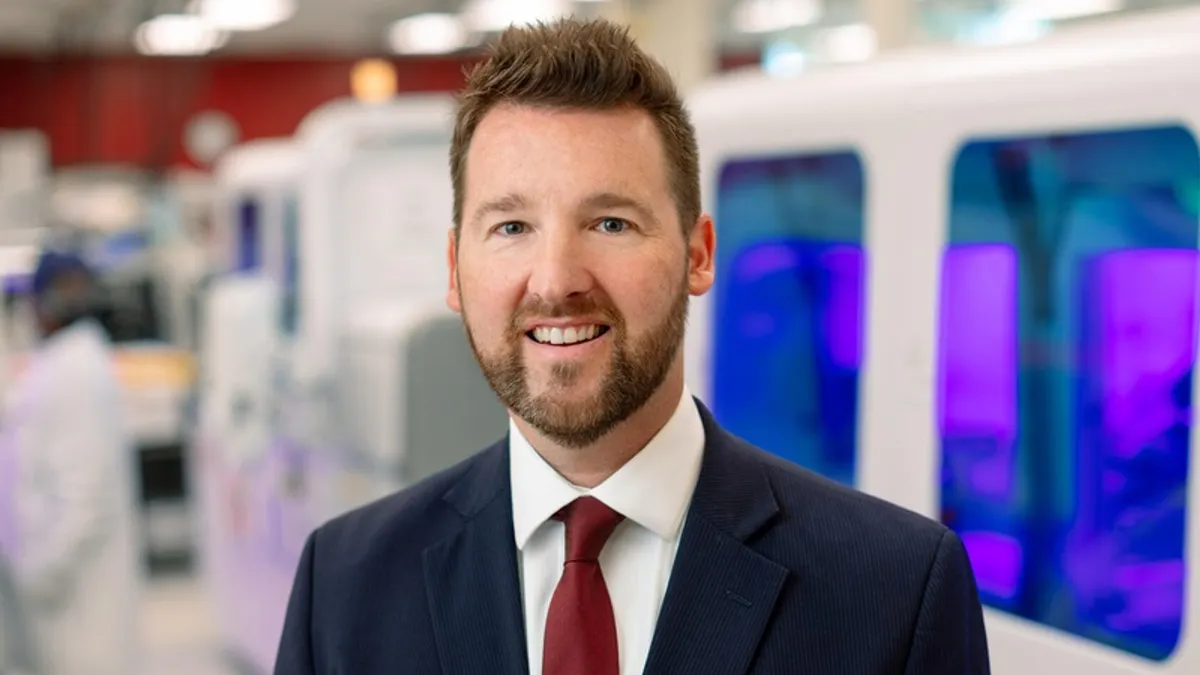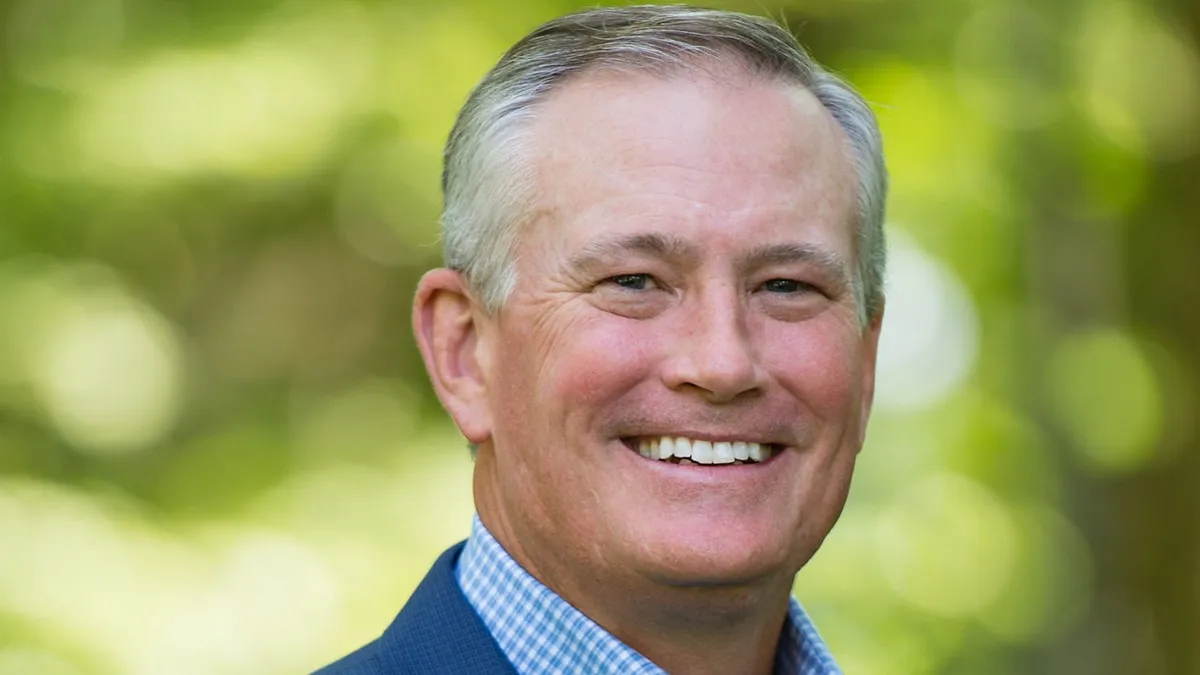While new variants drive another surge in COVID-19 across the U.S., demand for polymerase chain reaction tests is decreasing as more people turn to home tests. Laboratory testing companies are grappling with the swings in demand, with staffing and resources fluctuating accordingly.
At the same time, monkeypox cases are rising. As of July 20, the total number of confirmed cases across the U.S. had reached 2,323, according to the Centers for Disease Control and Prevention.
The Mayo Clinic is one of five commercial laboratories tapped by the Department of Health and Human Services to offer the CDC’s orthopoxvirus test. Although demand is currently low, it’s expected to increase along with case numbers.
Matthew Binnicker, director of clinical virology at Mayo Clinic Laboratories, in an interview talked about testing demand and how the firm is managing testing for both COVID-19 and monkeypox.
This interview has been edited for length and clarity.
MEDTECH DIVE: What kinds of volumes are you seeing with COVID-19 testing?
MATTHEW BINNICKER: Our testing volumes have actually dropped pretty significantly since the early part of 2022. We're still performing COVID testing of course, but not nearly to the extent that we were in January and February during the peak of the omicron surge. I think the reason for that is that a lot of testing is being performed using at-home antigen tests and so fewer members of the public are seeking out laboratory testing.
We are still seeing a pretty high positivity rate for COVID. In certain areas of the Midwest, it can range between 10% and 20%, depending on the day and location. So there is quite a bit of COVID still in the communities.
Who are you providing tests for?
We have two different patient populations that we receive samples from at Mayo Clinic. One is our internal Mayo Clinic patients. We do COVID testing before patients come in for certain procedures and surgeries just to make sure that they're not infected when we bring them into our hospital.
We are doing some testing for the community. So individuals who have respiratory illness can go to a community collection site and then the samples are sent to us. But like I mentioned, those numbers of community tests have dropped as more people I think are seeking out the at-home antigen tests.
And then we're also a reference laboratory. So we get samples from all over the United States and some of our clients are hospitals or clinics around the country [that] are still sending in samples for COVID testing for symptomatic individuals, potentially for those pre-procedural surgical screening tests that they're doing at their local sites. But the numbers overall that we're getting in from our reference clients around the country have dropped pretty substantially as more hospitals and clinics have brought out their own local COVID testing, or just the demand for COVID testing has dropped.
You recently started offering the CDC’s orthopoxvirus test, which can be used to diagnose monkeypox. What went into that?
The five participating labs all have to perform the test exactly as it was cleared by the FDA. So there's specific instrumentation that the labs need to have and use, and all of the amounts of sample, the types of sample, the incubation steps, the protocol has to be followed exactly.
We're not able to use our own testing method or instrumentation with the CDC’s FDA-cleared approach. Now, some labs are bringing up what are called lab-developed tests where they can use different tests or different instrumentation, but that requires a different level of validation. It's more extensive than what we did to just bring on the CDC’s FDA-cleared test.
What demand are you seeing for monkeypox testing?
So far, overall demand is still low as more people are [becoming] aware of this. I think it will ramp up significantly in the coming weeks. At this point, we're getting lots of questions about the test itself, what the requirements are in terms of the sample and what type of swab hospitals can use to collect the sample. So I anticipate over the course of the next few weeks that we'll start to see quite a few more samples being submitted for testing, especially as the number of confirmed cases [increases] … So still overall low in comparison to COVID, but as more testing is performed, more cases are going to be identified.
What symptoms should people watch for?
What we're keeping an eye out for are patients who present with any rash, especially in follow up to having close contact with someone else who's had a rash or has been confirmed to have had monkeypox.
Most of the time, cases start out with patients having a flu-like illness where they might have a headache and body aches, fever and chills. And then a day or two later they can develop a rash.
That rash can be isolated on the body. It doesn't have to be a rash that’s spread all over the body like some people think about with smallpox or the textbook pictures of monkeypox, where you see an individual with head to toe covered in a large, pustular rash. This outbreak’s a bit different in that patients may present with just one or two lesions on their body. And so that can be difficult for physicians to connect, oh, this patient might have monkeypox.
We're seeing a lot of monkeypox cases in individuals who have had sexual contact with another person who had monkeypox.
So those are some of the signs that we're recommending people watch out for to initiate monkeypox evaluation.
How are you balancing both COVID and monkeypox testing?
It's definitely difficult because laboratories, including ours, have ramped up staff and equipment for the COVID-19 response. As I mentioned, the demand for COVID has dropped over the last several months. So some of the staff that we brought in for COVID testing, we maybe even brought them in from other laboratories like genetics laboratories, they've gone back to their home labs, because that work needs to be done as well.
And now with this demand for monkeypox testing, labs like ours are having a challenging time trying to handle both. It's definitely good that the COVID-19 test demand is not as high as it was early on in 2022.
So there is some capacity in laboratories, but still it's a challenge to balance all of the demand from your current testing with a new virus that's coming on the scene.


















